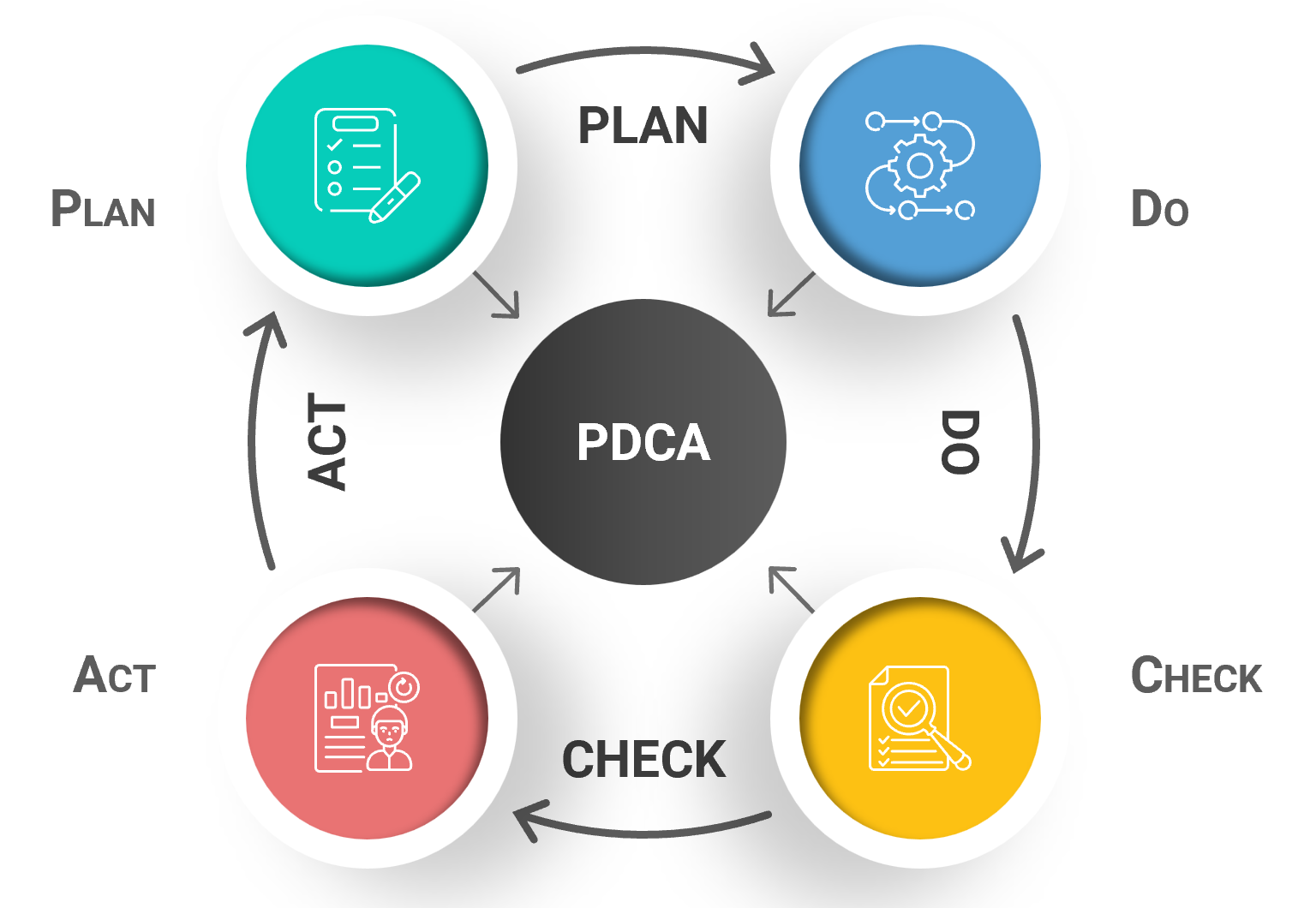CHAPTER 12: Agile Quality Management
The Competitive Edge for Modern Project Managers
12.1 Building Quality In from the Start
Why Quality Must Be Built In
Agile emphasizes building quality into the product from the very beginning. Unlike traditional approaches, where testing and defect fixing happen late in the cycle, Agile integrates quality as part of daily work. This means developers, testers, and product owners all share responsibility for delivering working, reliable features each sprint. By embedding quality early, the team prevents defects rather than chasing them after release, which saves time, cost, and frustration.
Prevention Over Inspection
In Agile, prevention is more valuable than inspection. Waiting until the end to test and inspect leads to defects piling up, which becomes costly to resolve. Instead, Agile teams use practices like test-first development, continuous integration, and peer reviews to prevent defects from entering the product. By focusing on prevention, quality becomes part of the workflow, not a separate phase. This creates a sustainable pace and builds trust with stakeholders.
Shared Responsibility for Quality
Quality is not just the job of testers or quality assurance specialists. Every team member is responsible for ensuring high-quality outcomes. Developers write clean, maintainable code. Testers provide feedback early and often. Product owners clarify acceptance criteria so the team knows what success looks like. This shared accountability ensures that quality is considered at each step, making it part of the team’s culture rather than a handoff at the end.
Incremental and Continuous Quality
Agile builds quality by delivering small, working increments frequently. Each increment is integrated, tested, and reviewed, ensuring it meets agreed standards. This approach allows the team to detect issues early and adapt quickly. Continuous feedback loops with stakeholders also reinforce quality, because what is delivered is aligned with real customer needs. Frequent increments, combined with reviews and retrospectives, drive continuous improvement and prevent quality from drifting off course.
Quality as a Competitive Advantage
When teams build quality in from the start, they reduce rework, lower costs, and increase customer satisfaction. Products that work as expected earn user trust and strengthen an organization’s reputation. In competitive markets, this becomes a clear advantage. Rather than rushing features at the expense of quality, Agile teams show that sustainable, built-in quality leads to faster delivery of value and long-term success. Quality is not just a goal, it is a strategy.
12.2 Continuous Integration and Testing Practices
What Continuous Integration Means
Continuous integration, often called CI, is the practice of frequently merging code changes into a shared repository. Each merge automatically triggers a build and test cycle. This ensures that the system is always in a working state and ready to deliver value. Instead of waiting days or weeks to find integration problems, CI reveals them within minutes or hours, giving teams the opportunity to fix issues quickly.
Why Continuous Integration Matters
Without CI, integration problems often remain hidden until late in development, where they are costly and frustrating to resolve. Agile favors short feedback loops, and CI delivers that feedback immediately. Teams gain confidence that the product is stable, and stakeholders see regular progress. Continuous integration supports the Agile principle of delivering working software frequently, reinforcing transparency and trust within the project environment.
The Role of Automated Testing
Automated testing is a natural partner to continuous integration. When code is integrated, automated tests run to confirm that existing functionality has not broken. These tests may include unit tests, integration tests, and even automated user interface checks. Automated testing reduces reliance on manual test cycles, speeds up delivery, and makes sure that the product remains reliable even as new features are added each sprint.
Test-First and Test-Driven Practices
Many Agile teams use test-first approaches, such as Test-Driven Development. In this practice, the team writes a failing test before writing the code to make it pass. This ensures that development work is directly tied to requirements and quality expectations. By starting with tests, the team avoids unnecessary code and produces solutions that are easier to maintain. Test-first practices also encourage developers to think about quality from the very beginning of each task.
Benefits of CI and Automated Testing
Continuous integration and automated testing combine to reduce defects, accelerate delivery, and improve confidence in the product. Integration issues are found early, when they are easier to fix. Automated tests allow teams to move faster without fear of breaking the system. Most importantly, these practices ensure that each product increment is reliable, stable, and ready for stakeholders. By embedding CI and testing into daily work, Agile teams deliver quality consistently and sustainably.
12.3 Technical Debt Causes, Consequences, and Strategies
Understanding Technical Debt
Technical debt is a metaphor that describes the future cost of taking shortcuts in software or product development. Just like financial debt, it may offer short-term benefits but creates long-term obligations. In Agile projects, technical debt builds up when teams sacrifice quality for speed, skip proper testing, or leave design issues unresolved. While some debt is intentional, unmanaged debt threatens the ability to deliver value reliably.
Causes of Technical Debt
There are several common reasons technical debt accumulates. Deadlines may pressure teams into skipping refactoring or automated tests. Sometimes, inexperienced developers make decisions that work in the moment but harm the system later. Other times, poor documentation or unclear requirements leave behind messy code. Even successful products attract debt when growth outpaces the team’s ability to maintain quality. Debt is often invisible, but it steadily grows if ignored.
Consequences of Technical Debt
Unchecked technical debt slows down progress and reduces flexibility. Over time, adding new features becomes harder, because every change risks breaking something. Teams experience more defects, more rework, and growing frustration. Stakeholders notice slower delivery and rising costs. At its worst, technical debt can reach a tipping point where progress nearly stops, because the system is too fragile to handle further changes. Customer trust and business value both suffer when debt is ignored.
Strategies to Manage Technical Debt
Agile teams must actively manage technical debt, just as they manage financial budgets. One strategy is making debt visible, using dashboards, backlog items, or team discussions. Another is prioritizing debt repayment, tackling the most harmful issues first. Teams can apply the “boy scout rule,” which means leaving the code cleaner than they found it. Pair programming, refactoring, and strong definitions of done all help prevent new debt from sneaking in unnoticed.
Balancing Speed and Sustainability
Not all technical debt must be repaid immediately. Some debt is low risk, while other debt has high interest and should be addressed quickly. Agile leaders encourage teams to balance delivery speed with sustainability, recognizing that small investments in quality pay off over time. By treating debt as a normal part of development, but one that requires discipline and visibility, teams can maintain momentum without sacrificing future success.
12.4 Quality Metrics and Continuous Improvement
Why Quality Planning Matters
In Agile projects, quality does not happen by accident. It must be planned and designed into the way teams work. Quality planning involves deciding on standards, practices, and tools that guide development. This may include coding conventions, documentation rules, or test automation strategies. Planning ensures that the team knows what quality looks like before work begins, creating a shared understanding of expectations and avoiding costly surprises later.
Quality Assurance During Development
Quality assurance is about preventing defects rather than catching them late. Agile teams embed assurance into their daily activities. Peer reviews, pair programming, and automated testing are common techniques. The Definition of Done helps ensure that each backlog item meets clear acceptance criteria before it is considered complete. Assurance shifts the focus from external inspection to internal discipline, reinforcing the idea that quality is everyone’s responsibility throughout the sprint.
Using Metrics to Track Quality
Agile teams use metrics to understand how well they are delivering quality. Examples include defect rates, cycle time, and escaped defects found by customers. Teams may also track build stability or code coverage from automated tests. These metrics are not about blaming individuals. Instead, they give visibility into patterns and trends. By measuring consistently, teams can spot risks early and use data to guide improvement decisions.
Continuous Improvement Through Feedback
Agile treats improvement as an ongoing cycle. Feedback from stakeholders, retrospectives, and metrics all feed into the process. Teams use this feedback to adjust practices, refine processes, and improve product quality over time. Continuous improvement follows the Plan–Do–Check–Act cycle, where small experiments lead to learning and adaptation. This mindset helps teams stay resilient in the face of changing needs, and it ensures that quality never stagnates.

Creating a Culture of Quality
Ultimately, quality in Agile is cultural as much as it is technical. Teams that plan for quality, assure it during development, measure it with useful metrics, and continuously improve create an environment where excellence is normal. This culture builds trust with customers and stakeholders. It also boosts morale, because team members are proud of the work they deliver. A culture of quality ensures that Agile projects deliver not just quickly, but reliably and sustainably.
Agile Project Management & Scrum — With AI
Ship value sooner, cut busywork, and lead with confidence. Whether you’re new to Agile or scaling multiple teams, this course gives you a practical system to plan smarter, execute faster, and keep stakeholders aligned.
This isn’t theory—it’s a hands-on playbook for modern delivery. You’ll master Scrum roles, events, and artifacts; turn vision into a living roadmap; and use AI to refine backlogs, write clear user stories and acceptance criteria, forecast with velocity, and automate status updates and reports.
You’ll learn estimation, capacity and release planning, quality and risk management (including risk burndown), and Agile-friendly EVM—plus how to scale with Scrum of Scrums, LeSS, SAFe, and more. Downloadable templates and ready-to-use GPT prompts help you apply everything immediately.
Learn proven patterns from real projects and adopt workflows that reduce meetings, improve visibility, and boost throughput. Ready to level up your delivery and lead in the AI era? Enroll now and start building smarter sprints.
Launch your Agile career!
HK School of Management helps you master Agile and Scrum—faster. Learn practical playbooks, AI-powered prompts, and real-world workflows to plan smarter, deliver sooner, and keep stakeholders aligned. For the price of lunch, you’ll get templates, tools, and step-by-step guidance to level up your projects. Backed by our 30-day money-back guarantee—zero risk, clear path to results.
Learn More HKSM
HKSM
